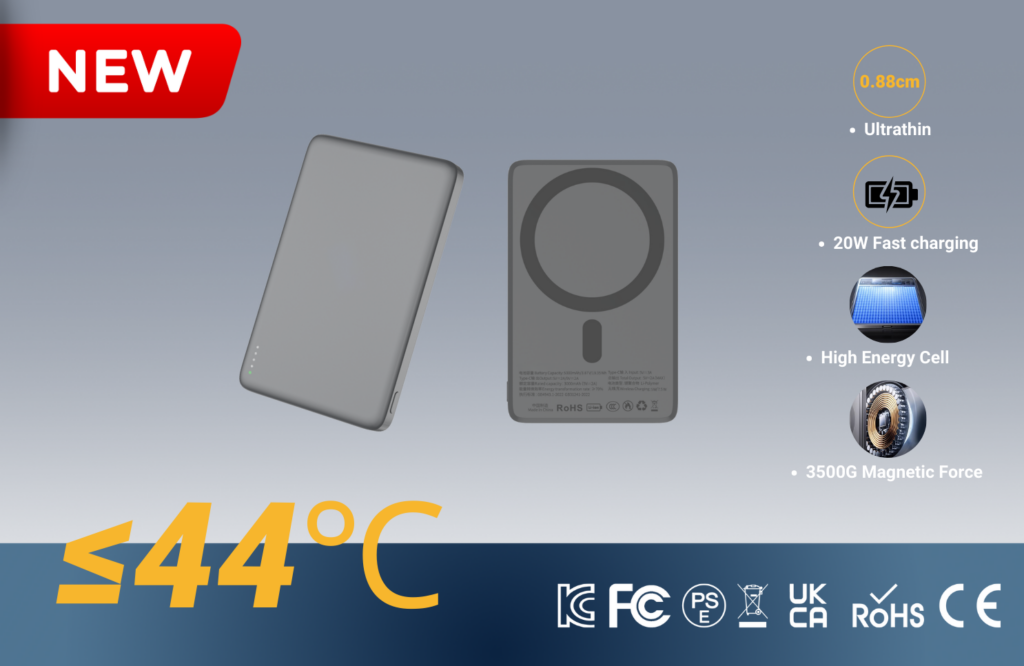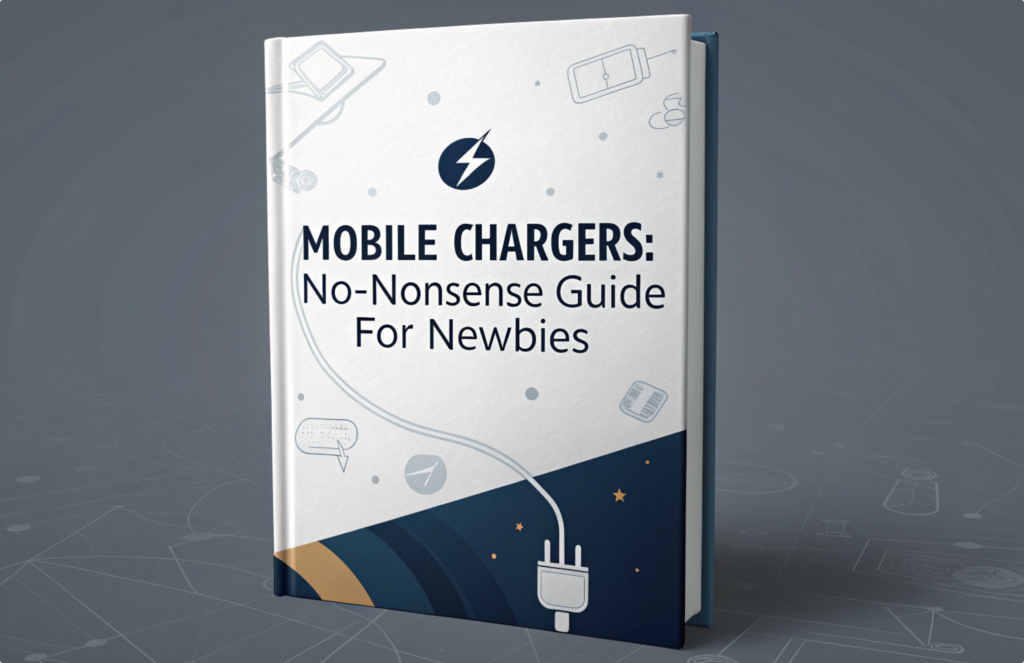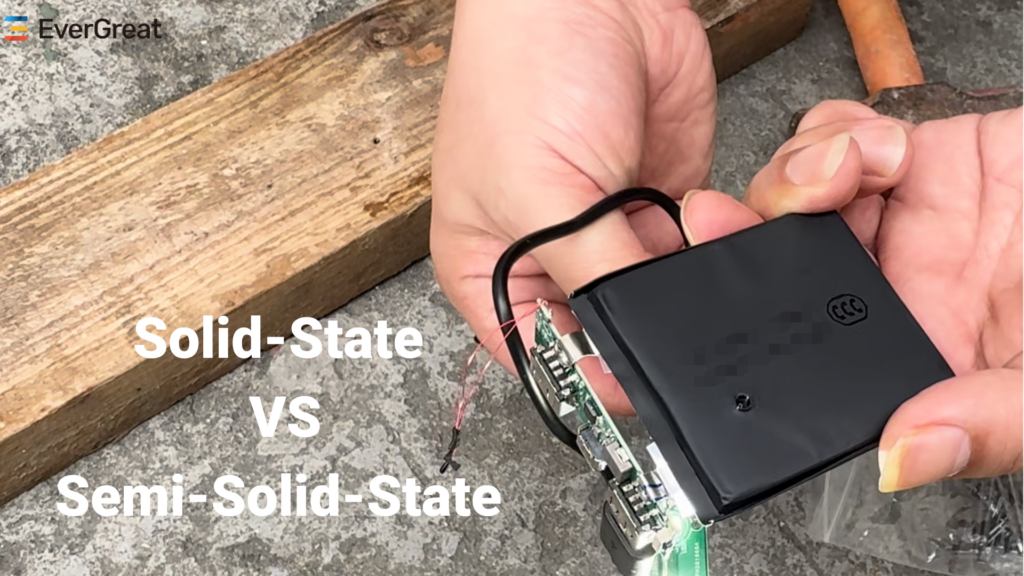It’s common for power banks to get hot, but many people don’t fully understand why. Whether you’re using a high-performance device or a regular one, heat buildup is almost inevitable. In this article, we will explore the reasons why power banks get hot, what factors contribute to it, and how to tell if it’s normal.
1. How Power Banks Work
Power banks store energy in their battery (usually lithium-ion or lithium polymer batteries) and release it when needed. To convert the energy stored in the battery into usable power (like 5V, 9V, etc.), a circuit board inside the power bank helps manage the flow of electricity. However, not all energy is used efficiently, and some is lost as heat.
2. The Main Reasons Power Banks Get Hot
Several factors contribute to a power bank heating up:
- Charging and Discharging the Battery: When the battery is charging or discharging, heat is generated. This is especially true when the power bank outputs high currents, such as during fast charging.
- Low Circuit Conversion Efficiency: The battery’s voltage (typically 3.7V) needs to be converted to a higher output voltage (like 5V or 9V). This conversion process causes some energy to be lost as heat.
- High Power Output: Power banks used to charge high-power devices (like tablets, laptops, or fast-charging phones) will naturally generate more heat. Fast charging technology, in particular, creates a lot of heat in a short amount of time.
- Environmental Factors: The external environment affects the power bank’s ability to dissipate heat. If the power bank is placed in a hot area or in an environment with poor ventilation (like in a car or under a blanket), it will heat up more easily.
Overuse or Improper Use: For example, charging while using the device, or using the power bank for “pass-through charging” (charging the power bank and another device at the same time) can increase the amount of heat generated.
3. The Normal Temperature for an Operating Portable Charger
The normal temperature for a power bank during operation is typically between 40°C and 50°C (104°F to 122°F). This range is considered safe for most power banks and indicates that the device is operating within standard conditions.
- Mild Heat: If your power bank is only slightly warm to the touch, especially under fast charging, it’s normal. The temperature should not exceed 50°C, and a slight warmth is usually within the acceptable operating range.
- Excessive Heat: If the power bank feels extremely hot to the touch (above 50°C), it could be a sign of an issue. The battery might be overcharged, or the environment might be causing poor heat dissipation.
- Dangerous Heat: If the power bank reaches temperatures above 60°C (140°F), this is considered unsafe, and you should stop using it immediately. High temperatures can lead to battery damage or even fires, especially in lithium-ion batteries. Always make sure your power bank stays within the safe temperature range.
4. How to Tell If Your Power Bank’s Heat Is Normal
It’s normal for power banks to get warm during use, especially when fast charging. However, if the temperature feels uncomfortable or hot to the touch, it’s important to check whether the heat is excessive or if something is wrong.
- Mild Heat: If the power bank is slightly warm, especially under fast charging, it’s likely fine. This is normal as long as the temperature isn’t uncomfortable.
- Excessive Heat: If the power bank feels too hot to touch or if it’s uncomfortable to hold, there may be an issue. In such cases, check if it’s being used in an environment that’s too hot, or if it’s being overused.
- Sustained Heat: If the power bank remains hot for an extended period, and it doesn’t cool down even after moving it to a cooler place, it could indicate a deeper issue. This is when you should stop using it and check for any malfunction.

5. My share view:
Regarding the above description, from my personal perspective and based on my years of experience in the power bank industry, I would like to share the following objective views:
1. Heat Isn’t Just a “Bad” Sign, It’s a Byproduct of Energy Conversion
When a power bank heats up, it’s not necessarily a sign that something is wrong. It’s just a natural result of the energy conversion process. The higher the power output and the faster the energy is transferred, the more heat will be generated. We need to consider: Why does the device need to output so much power in such a short time? This is a reflection of the "fast charging" trend, which people expect for convenience.
2. Heat Isn’t Just a Problem with One Component, It’s a System Issue
The heat a power bank produces isn’t usually caused by just one component. It’s the result of many factors: the choice of battery, the design of the circuit, the materials used in the casing, and the cooling system. Also, external factors like temperature and environment play a big role. This is important for buyers to consider. Instead of just looking at a product’s performance numbers, focus on the overall system design and optimization.
3. Heat Management Might Become a Key Competitive Point in the Future
As demand for fast charging and higher capacity batteries increases, heat management in power banks will become more important. Manufacturers will need to invest more in improving cooling systems. Using advanced materials, better battery management systems (BMS), and smart heat control technologies could become a major point of differentiation in the market. For buyers, choosing suppliers with these technologies could give them a competitive edge.
6. Advice for Consumers and Buyers
- For Consumers:
If your power bank gets hot, don’t panic. First, check if the temperature is within a normal range. It’s common for power banks to get warm when charging quickly. But if it feels uncomfortably hot, or if it remains hot for a long time, it’s time to take action. Try using the power bank in a cooler environment, avoid covering it, and reduce the charging time. Understanding heat management and the device’s working principle helps you use it safely and avoid issues.
- For Buyers:
When purchasing power banks, choose suppliers that have innovative heat management capabilities. Ask about heat cycle tests, temperature rise tests, and how they manage heat within the design. Suppliers who provide temperature data, cooling system details, and heat control strategies (such as reducing output when overheating) are better options. This will ensure the safety of your products and provide a better experience for your customers.
By understanding heat management and the physical principles behind it, the issue of heat in power banks is not a technical challenge that can’t be solved. Whether you’re a consumer or a buyer, knowing how heat works in power banks helps make informed decisions and improves your experience.









